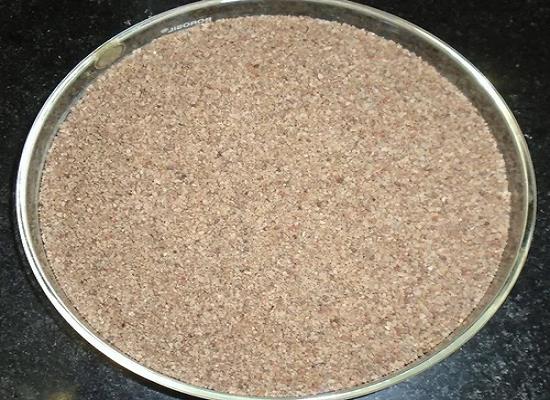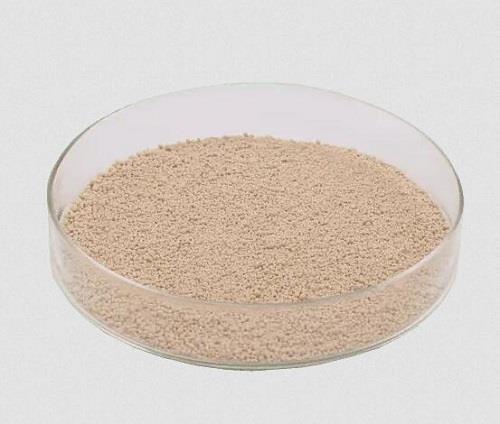Temephos: Toxicokinetics and Toxicity
General Description
Temephos, an organophosphate larvicide, is utilized to control disease-transmitting vectors like mosquitoes and fleas. It has a chemical formula of C16H20O6P2S3, a molecular weight of 466.48 g/mol, and a melting point range of 30–30.5℃. Absorbed through the gastrointestinal tract, skin, or inhalation, Temephos distributes to organs and tissues, particularly lipid-rich sites, and undergoes biotransformation in the liver. Metabolites like Tem-SO2-OH play a key role in its toxicity. Elimination occurs mainly through feces and urine, with a half-life of 7 to 10 hours. Toxicity arises from acetylcholinesterase inhibition, leading to symptoms like muscle weakness and respiratory failure. Behavioral effects, genotoxicity, and reproductive alterations have also been observed. Further research is essential to fully understand Temephos' toxicological effects.

Figure 1. Temephos
Overview
Temephos is a larvicide classified under the organophosphate pesticides family. With a chemical formula of C16H20O6P2S3 and a molecular weight of 466.48 g/mol, it exhibits a melting point range of 30–30.5℃ and decomposes at temperatures between 120–125℃. Its solubility at 25℃ is measured at 30 g/L. Originally synthesized by American Cyanamid during the period of 1963–1967, Temephos is primarily utilized to eradicate and manage the proliferation of various disease-transmitting vectors such as mosquitoes, blackflies, and fleas. These vectors are responsible for spreading diseases such as dengue, Zika, chikungunya, and dracunculiasis. Marketed under different trade names like AbateVR, Abathion, Larvafos, and others, Temephos is available in emulsified compounds at various concentrations or in granular forms. However, it's essential to note that some formulations may contain impurities, including isotemephos at approximately 1.4%. 1
Toxicokinetics
Temephos, a pesticide, exhibits a complex toxicokinetic profile involving various processes. Upon exposure, it is predominantly absorbed through the gastrointestinal tract, skin, and inhalation, with oral ingestion being the primary route studied in rats. Rapid absorption leads to a peak blood concentration of approximately 10 µg/mL within 2 hours post-dosing. Following absorption, Temephos distributes to different organs and tissues, favoring lipid-rich sites and accumulating notably in adipose tissue. The liver serves as the principal site for biotransformation, where Temephos undergoes S-oxidation, oxidative desulfuration, and hydrolysis, yielding metabolites such as Tem-SO2-OH and Temoxon. The biotransformed metabolites play a crucial role in the toxicity of Temephos, with Tem-SO2-OH identified as a significant biomarker of acute exposure. Subsequently, Temephos is efficiently eliminated from the bloodstream, exhibiting a high blood clearance rate. The primary routes of elimination include fecal and urinary excretion, with bile excretion observed in guinea pigs. The elimination half-life of Temephos ranges from 7 to 10 hours, indicating relatively rapid clearance. Further research is imperative to elucidate the human-specific metabolism of Temephos and the involvement of specific enzymes, contributing to a comprehensive understanding of its toxicological implications. 2
Toxicity
Temephos, a pesticide, exhibits a toxicity profile characterized by its impact on acetylcholinesterase (AChE) activity, resulting in the accumulation of acetylcholine and subsequent overstimulation of muscarinic and nicotinic receptors. Symptoms of Temephos poisoning include agitation, muscle weakness, hypersalivation, and respiratory failure, with severe cases leading to unconsciousness, convulsions, and even death. Studies have shown that Temephos inhibits AChE activity in various species, with differences observed based on exposure duration, dose, and vehicle used for administration. Behavioral effects of Temephos exposure have been reported, including hyperactivity, stereotyped behavior, and impaired social interactions in animal models. Genotoxicity studies have indicated that Temephos can induce DNA damage in blood cells and produce micronuclei, suggesting potential adverse effects on genetic material. Reproductive effects of Temephos exposure include alterations in sperm quality parameters, such as motility, viability, and chromatin structure, potentially impacting fertilization potential and embryo development. Further research is needed to comprehensively understand the reproductive, genotoxic, and behavioral effects of Temephos, considering different exposure scenarios and endpoints to evaluate its toxicological implications accurately. 2
Reference
1. U.S. Reregistration eligibility decision (RED) of temephos. Environmental Protection Agency. 2016.
2. Martínez-Mercado JP, Sierra-Santoyo A, Verdín-Betancourt FA, Rojas-García AE, Quintanilla-Vega B. Temephos, an organophosphate larvicide for residential use: a review of its toxicity. Crit Rev Toxicol. 2022; 52(2): 113-124.



